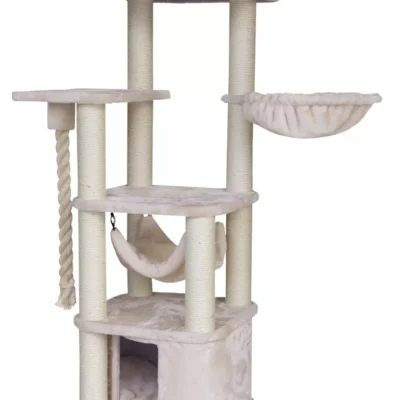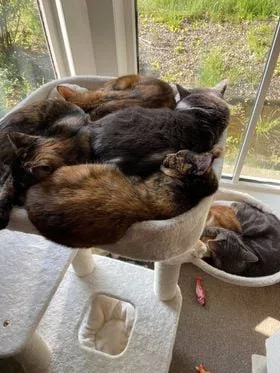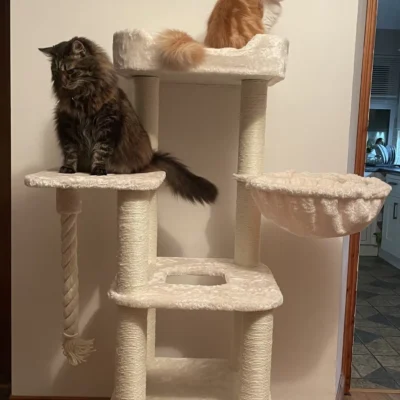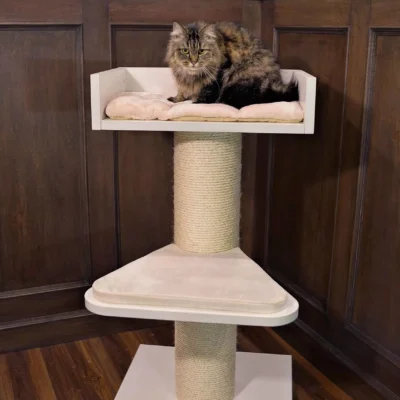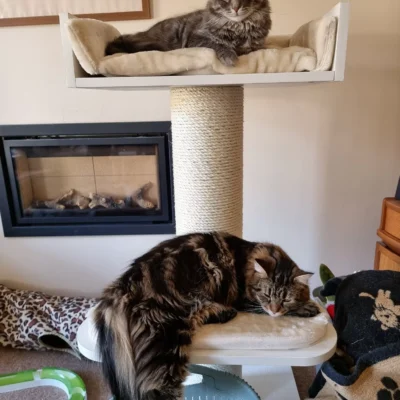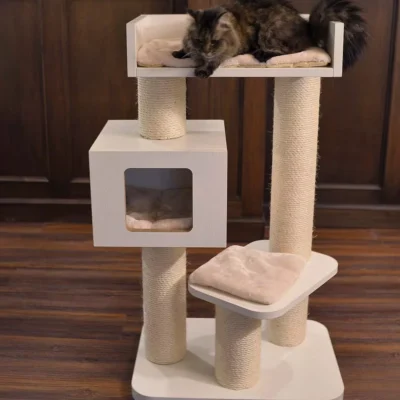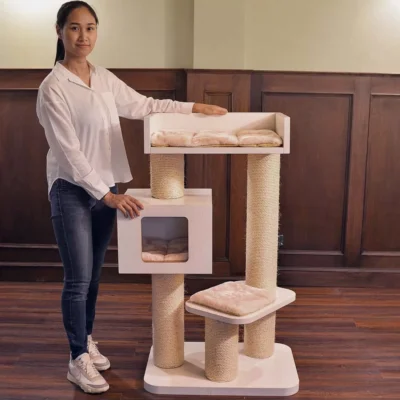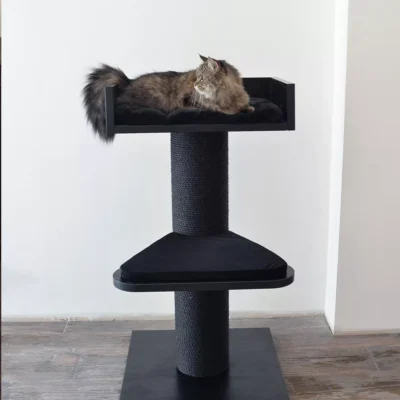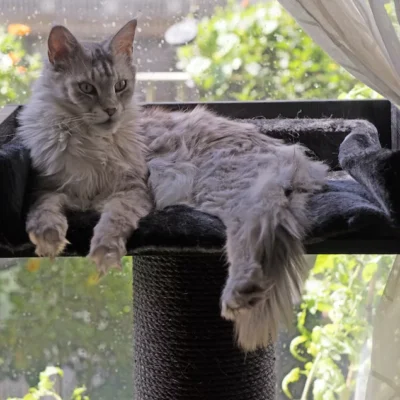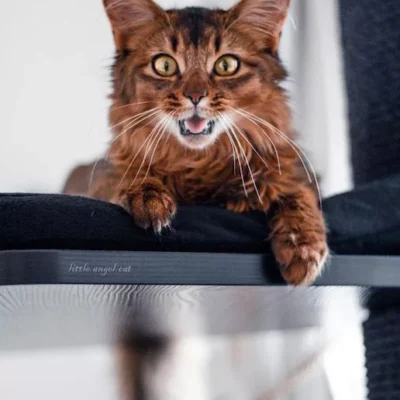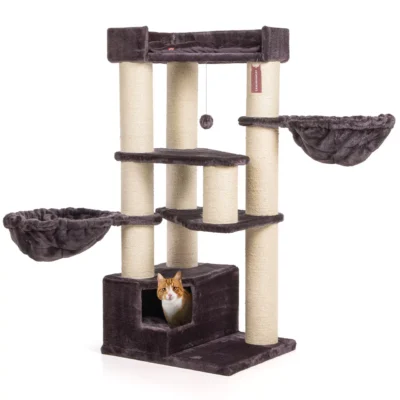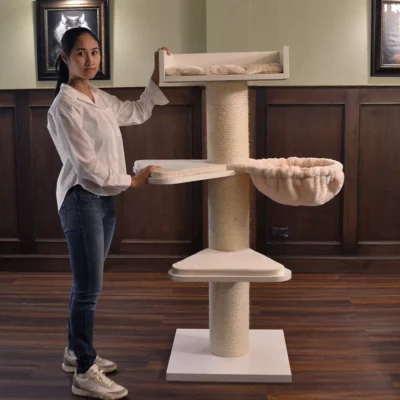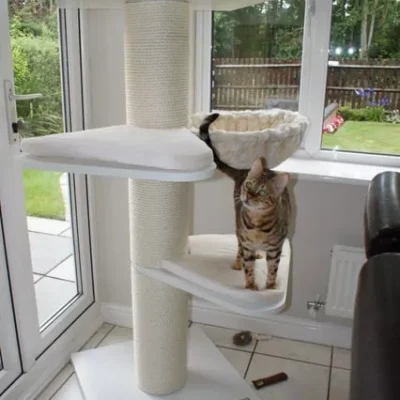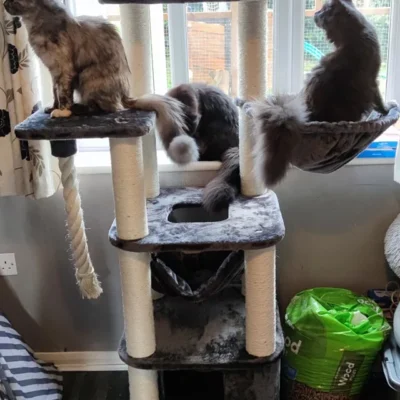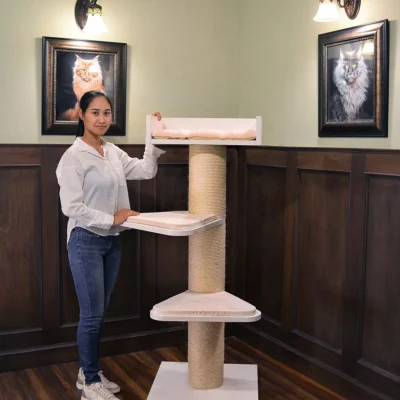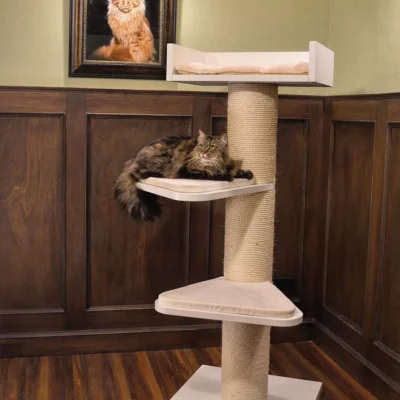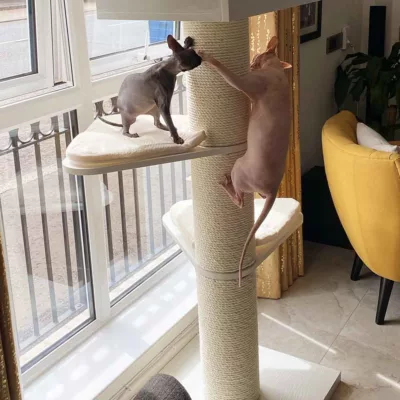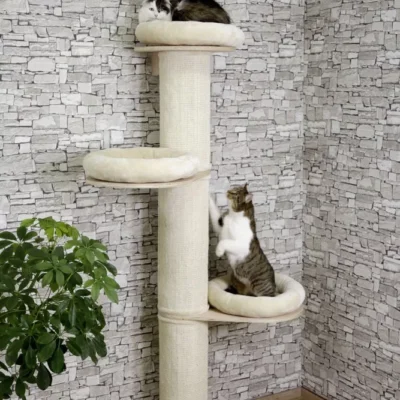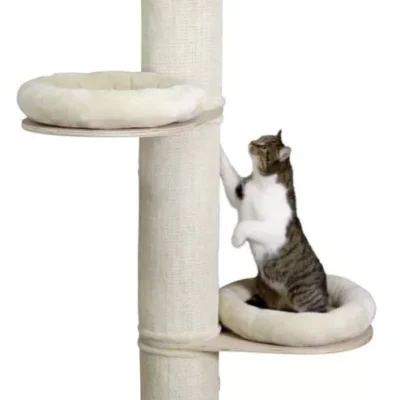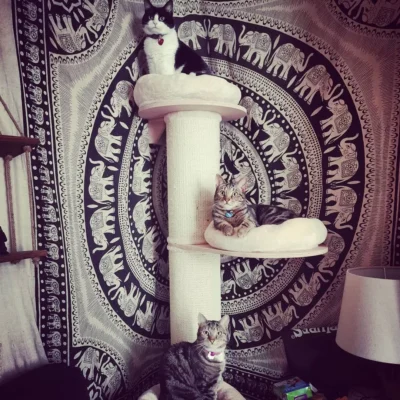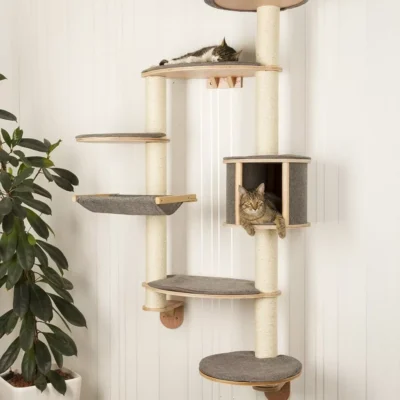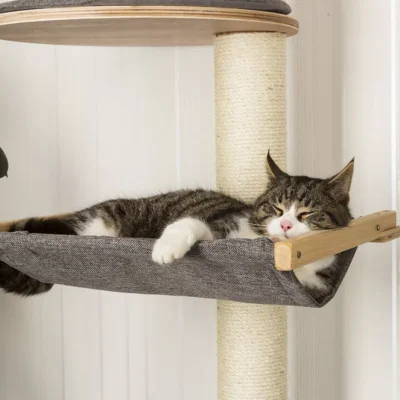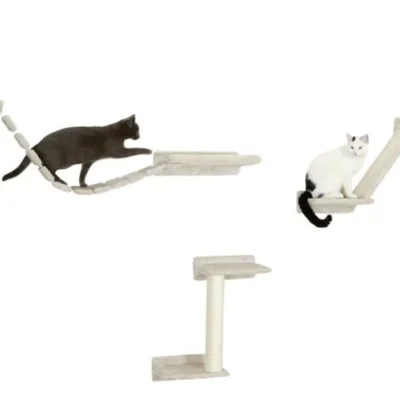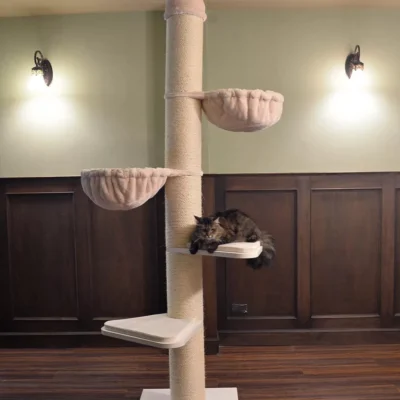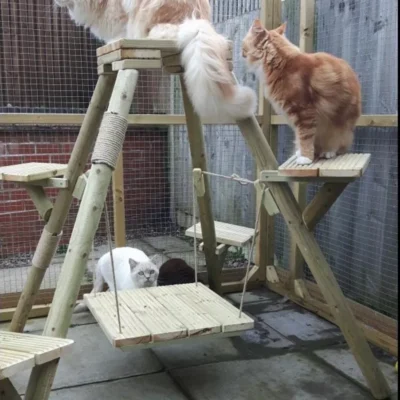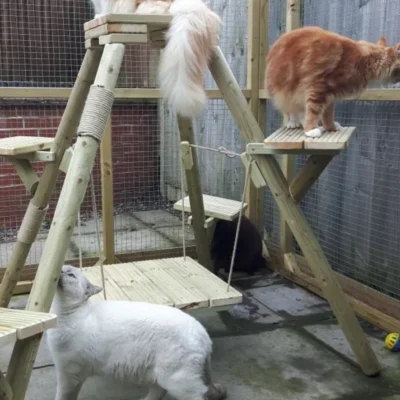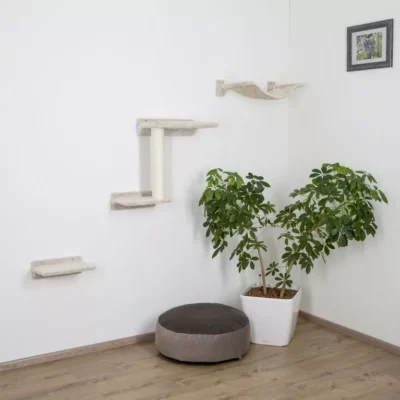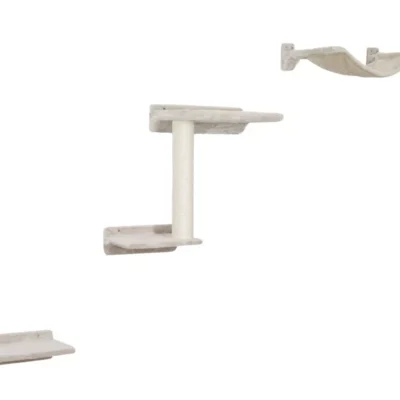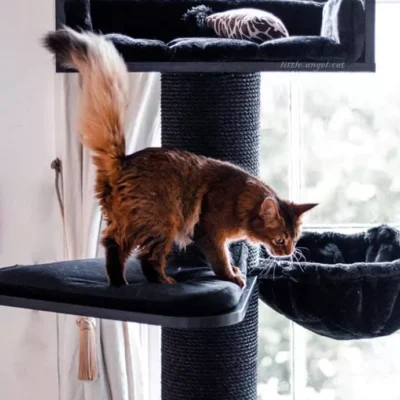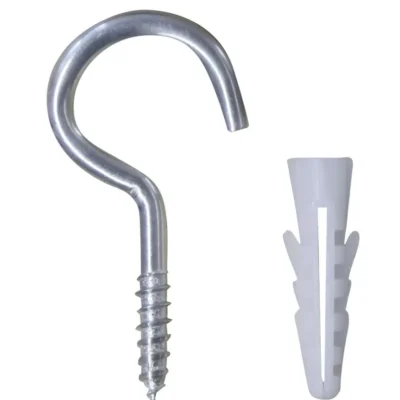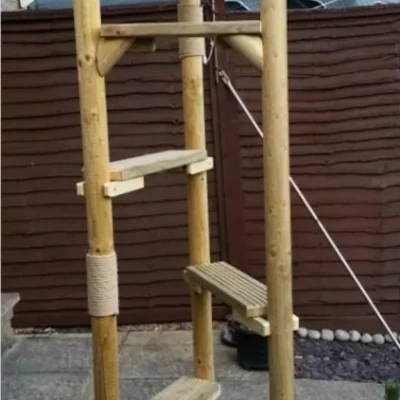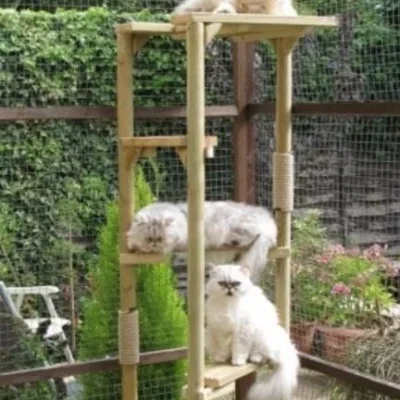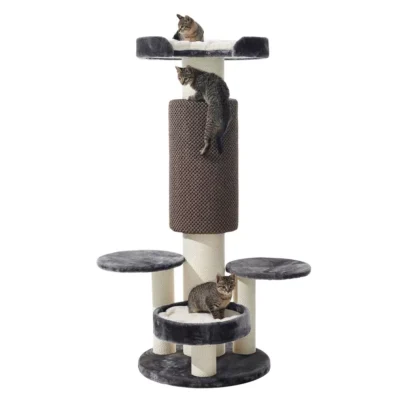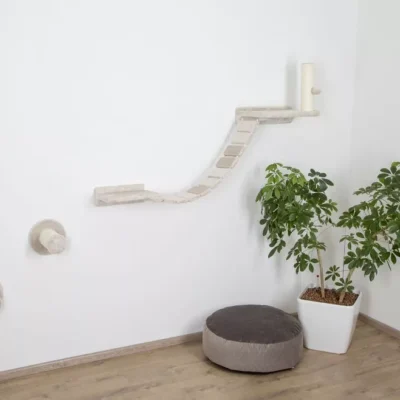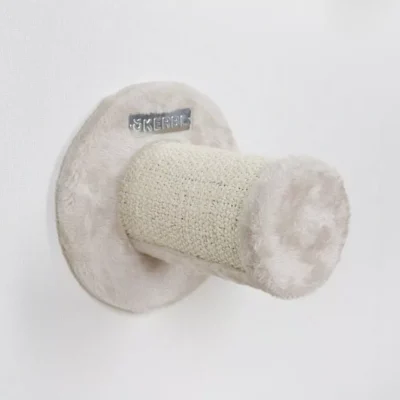0
Food puzzles, often referred to as puzzle feeders or interactive feeders, are an innovative way to feed cats that stimulates their natural instincts and enriches their daily life. These devices, which come in various shapes like balls, mazes, and treat-dispensing toys, require cats to work for their meal, making eating a more mentally and physically engaging activity.
The concept of food puzzles taps into the innate hunting and foraging instincts of cats. They mimic the act of hunting, allowing cats to stalk and ‘capture’ their food, providing much-needed mental and physical stimulation. This form of feeding is particularly beneficial in reducing boredom, as it presents an interactive and dynamic challenge, keeping cats mentally active and engaged.
Furthermore, food puzzles pique a cat’s curiosity, encouraging exploration and manipulation to access food, and can be especially helpful in slowing down the eating process. This slower pace of eating can aid in better digestion and help in controlling overeating.
Incorporating food puzzles into a cat’s playtime has numerous mental and physical benefits. They offer mental exercise which can be crucial in preventing cognitive decline in older cats. From an emotional standpoint, mentally stimulated cats are often happier and less prone to stress or anxiety-related behaviors.
These puzzles can also play a role in weight management by encouraging physical activity during mealtime and helping control portion sizes. They are an effective way to redirect a cat’s excess energy, potentially reducing destructive behaviors.
Additionally, interacting with your cat through puzzle feeding can strengthen the human-animal bond, as it becomes a fun and rewarding activity for them.
Food puzzles can also foster healthier eating habits in cats. They allow for better portion control and slow down the feeding process, which is beneficial for cats prone to gastrointestinal issues due to rapid eating.
Cats with food anxiety or tendencies to guard resources may find the gradual consumption offered by food puzzles less stressful. For cats needing to maintain a specific weight, portioned puzzle feeders are useful tools to achieve and sustain that goal.
In summary, food puzzles for cats are more than just feeding devices; they are tools for enriching a cat’s life. They harness a cat’s natural instincts, provide mental stimulation, encourage healthier eating habits, and help in building a stronger bond between cats and their owners.
Regularly incorporating food puzzles into a cat’s routine can lead to a happier, healthier, and more contented feline companion, contributing significantly to their overall well-being.
Materials and Tools You’ll Need
Creating DIY food puzzles for your cat is an engaging project that not only stimulates your cat’s mind but also provides a fun crafting experience for you. Before you begin, it’s important to gather all the necessary materials and tools to ensure a smooth crafting process and a safe final product for your feline friend.
For this project, you’ll need a variety of materials. Empty and clean plastic bottles of various sizes can be turned into several food puzzle designs. Cardboard boxes, in different shapes and sizes, are also great for crafting a range of puzzles.
Empty paper towel rolls can serve as a base for some puzzle types. You’ll need a pair of sharp scissors for cutting and shaping materials, along with clear adhesive tape or duct tape for assembling pieces. Non-toxic glue, such as white school glue or glue from a hot glue gun, is useful for certain projects.
For personalizing and decorating your cat’s food puzzles, have some markers and stickers at hand. And don’t forget the most crucial element: small, dry treats or your cat’s regular kibble, which will be the reward for solving the puzzles.
In terms of tools, a utility knife or box cutter will be needed for making precise cuts, especially in cardboard or plastic. A ruler is important for accurate measurements, and a marker or pencil will come in handy for outlining cutting lines and design details.
Protect your work surface and ensure safe cutting with a crafting mat or cutting board. Safety gloves are recommended to protect your hands, especially when using sharp tools.
When selecting materials, it’s paramount to prioritize safety. Ensure that all materials and tools are safe and non-toxic. Check labels to confirm that glues and paints are pet-safe and free of harmful chemicals. Be vigilant about smoothing any sharp edges on materials to prevent any risk to your cat. Always supervise your cat when introducing a new food puzzle to ensure safe engagement.
Creating food puzzles for your cat can be a budget-friendly endeavor. Many of the materials and tools required are readily available and affordable, and you can often repurpose items you already have at home, further reducing costs.
Before starting your crafting session, it’s essential to prepare your workspace. Clear enough space to work comfortably, and organize your materials so they are easily accessible. Use a crafting mat or cutting board to protect your work surface from scratches or glue spills.
Ensure your workspace has adequate lighting, which is essential for precision and safety. If you’re using glue or paints, work in a well-ventilated area to avoid inhaling any fumes. And remember, if necessary, wear safety gloves to protect your hands during the crafting process.
In summary, crafting food puzzles for your cat is a rewarding and cost-effective way to provide mental and physical stimulation. By gathering safe materials and tools, choosing non-toxic options, and preparing your workspace, you can embark on this DIY project with confidence. This activity not only ensures fun and enrichment for your cat but also allows you to enjoy the creative process.
Designing Your Cat’s Food Puzzle
Designing food puzzles for your cat is a creative and engaging way to cater to their natural instincts and keep them mentally stimulated. These puzzles come in various forms and can be tailored to suit the specific preferences and needs of your cat.
One popular type of food puzzle is the ball or rolling puzzle. These are ideal for cats who are naturally playful and enjoy a bit of physical activity. As your cat bats or rolls the puzzle, it dispenses treats or kibble, providing both mental and physical stimulation.
Maze or labyrinth puzzles are another option, perfect for cats who like to solve problems and explore. These puzzles challenge your cat to navigate through tunnels or channels to reach their food, engaging their problem-solving skills.
Stationary puzzles, which have compartments or hiding spots for treats, are suitable for cats of various skill levels. Your cat must figure out how to access these hidden treats, providing a fun and rewarding challenge.
Interactive feeders, often flat and mat-like with compartments for scattering kibble or treats, are great for cats that prefer using their paws or tongues to extract food. These feeders encourage a more tactile approach to feeding.
When designing a food puzzle, it’s important to consider your cat’s age, size, and skill level. For example, kittens may need simpler puzzles to start with, while older or more experienced cats might enjoy more complex challenges. Ensure that the size of the puzzle is appropriate for your cat’s physical abilities.
There are numerous ideas for puzzle shapes and configurations. You could create simple cubes with openings for treats, construct maze-like structures using cardboard or PVC pipes, or use silicone baking mats with raised sections to hide treats. Even recycled containers like yogurt cups or egg cartons can be transformed into inexpensive and customizable puzzles.
To keep your cat engaged, it’s important to create puzzles that offer varying levels of difficulty. Start with simpler designs and gradually introduce more complex puzzles as your cat becomes more adept. Mixing different textures and hiding surprises like a favorite toy or extra treats within the puzzle can also keep your cat interested.
Rotating puzzles or introducing new ones periodically can help prevent boredom. Additionally, crafting puzzles with adjustable elements allows you to change the difficulty level, adapting the puzzle to your cat’s evolving skills.
In summary, crafting food puzzles for your cat is not only a fun and enriching activity for you but also provides numerous benefits for your cat. It promotes mental stimulation, physical activity, and can even help with issues like rapid eating.
By considering your cat’s individual needs and preferences and getting creative with the design, you can create an array of puzzles that will keep your feline friend entertained and engaged.
Step-by-Step Crafting Instructions
Creating food puzzles for your cat is a fun and rewarding DIY project that can provide endless entertainment and mental stimulation for your pet. Whether you’re a beginner or looking to craft more complex puzzles, here’s a step-by-step guide to help you get started.
Building a Simple Food Puzzle
Materials and Tools Needed:
- Clean, empty plastic bottle with a lid
- Scissors
- Marker or pencil
- Cat treats or kibble
- Clear adhesive tape
Instructions:
- Prepare the Bottle: Make sure the plastic bottle is clean, dry, and free of any labels or stickers.
- Mark Cutting Points: With a marker or pencil, mark two or more evenly spaced points around the bottle where you will cut openings for the treats.
- Cut Openings: Carefully cut along the marked lines to create openings large enough for the treats or kibble to pass through. Ensure the edges are smooth to avoid any injury to your cat.
- Fill with Treats: Load the bottle with your cat’s favorite treats or kibble.
- Secure the Lid: Place the lid back on the bottle to keep the treats inside.
- Initiate Play: Set the bottle on the floor and encourage your cat to interact with it. They will need to roll and swat the bottle to get the treats out.
Crafting More Complex Puzzles as Your Skills Grow
Once you’re comfortable with basic designs, you can try creating more intricate puzzles.
Materials and Tools Needed:
- Cardboard box with a lid
- Utility knife or scissors
- Small cardboard boxes or PVC pipes
- Non-toxic glue or tape
- Paints or markers for decoration (optional)
Instructions:
- Prepare the Box: Ensure the cardboard box is clean and dry, removing any stickers or labels.
- Cut Openings: Use a utility knife or scissors to cut various shapes and sizes of openings in the box, adding complexity.
- Create Maze Paths: Inside the box, use glue or tape to attach smaller cardboard boxes or PVC pipes, creating a maze-like structure with multiple paths.
- Decorate (Optional): If desired, decorate the outside of the box with paints or markers for visual appeal.
- Fill with Treats: Place treats or kibble inside the maze pathways.
- Challenge Your Cat: Close the box with the lid, leaving a small gap for treats to fall through. Encourage your cat to explore and retrieve their rewards.
Ensuring Durability and Easy Cleaning:
- Choose durable materials and reinforce seams with extra tape or glue.
- Use non-toxic, pet-safe adhesives and paints.
- Regularly inspect and maintain the puzzle.
- Select materials that are easy to clean.
Adding Finishing Touches for Visual Appeal:
- Decorate the puzzle with cat-friendly colors and patterns.
- Attach small bells or feathers to stimulate interest.
- Place the puzzle in a well-lit and visible area.
By following these crafting instructions, you can create a variety of engaging food puzzles for your cat. Whether simple or complex, these puzzles provide mental stimulation and entertainment, enhancing your cat’s overall well-being. Plus, the process of crafting them can be a fun and creative activity for you. Enjoy watching your cat explore and solve the puzzles you’ve created with love and care!
Introducing Your Cat to the Food Puzzle
Introducing your cat to food puzzles is an enriching experience that requires a careful and gradual approach. The first step is to assess your cat’s interest. If your cat is naturally curious and enjoys interactive play, they may quickly adapt to puzzle feeding. However, every cat is unique, and their response to new experiences can vary.
To begin the transition, introduce the food puzzle alongside your cat’s regular meals. This dual approach allows your cat to become accustomed to the puzzle without disrupting their normal eating routine. It’s a good idea to use your cat’s favorite treats or kibble in the puzzle, as the familiar smell and taste will entice them to interact with the new device.
When you first introduce the puzzle, place it in a familiar area where your cat spends a lot of time. Allow them to explore it at their own pace, without any pressure to use it immediately. Some cats might be immediately curious and start exploring the puzzle, while others might seem confused or even frustrated at first. These initial reactions are normal, and with time, most cats grow to enjoy the challenge of the puzzle.
As your cat becomes more comfortable with the puzzle, you can begin to increase its complexity to keep them engaged and mentally stimulated. This could involve making the treat openings smaller, using puzzles with multiple compartments, or changing the setup of the puzzle. The goal is to maintain your cat’s interest and provide a continuous mental challenge.
It’s important to monitor your cat’s progress with the puzzle. Observe how quickly they can access the food and adjust the difficulty accordingly to ensure it’s challenging but not overly frustrating. Regularly check the puzzle for signs of wear and tear and replace or repair it as needed. Rotating new puzzles or altering the current ones can help prevent boredom and keep your cat interested in the activity.
Consistency in feeding routine and attentiveness to your cat’s reactions are key to a successful transition to puzzle feeding. Maintain a regular feeding schedule and be mindful of how your cat interacts with the puzzle. Their body language and behavior can provide valuable insights into their preferences and enjoyment of the puzzle.
In conclusion, introducing your cat to food puzzles is a process that can greatly benefit their mental and physical health. It engages their natural instincts, provides mental stimulation, and adds an enriching dimension to their daily activities. With patience, observation, and a gradual approach, you can successfully integrate puzzle feeding into your cat’s routine, enhancing their overall wellbeing and strengthening the bond you share with your pet.
Beyond Food Puzzles: Other DIY Enrichment Ideas
Beyond food puzzles, there are many other DIY enrichment ideas that can provide entertainment and stimulation for your cat. These activities not only keep your cat engaged but also strengthen the bond you share with them.
Creating feather wands is a great way to simulate hunting behavior. You can easily make one by attaching feathers to a stick or dowel. When you wiggle the wand, it encourages your cat to pounce and engage in natural predatory behaviors.
Cardboard hideaways are another simple yet effective DIY project. You can use cardboard boxes to create tunnels and small hiding spaces for your cat to explore. Cutting holes of different sizes in these boxes adds an element of surprise and curiosity for your cat.
Catnip toys are a perennial favorite among felines. You can make these by sewing or knotting fabric scraps into small pouches and filling them with catnip. These toys can provide hours of playful enjoyment for your cat.
Interactive toys, such as those with bells, crinkly paper, or jingling objects attached to strings or ribbons, offer auditory stimulation and encourage playful interaction. Homemade fishing rod toys, created by attaching a toy or feather to a string and then tying it to a stick, are also a hit with many cats.
To keep your cat from getting bored with their toys, it’s important to rotate and vary their play activities. Introducing new DIY toys periodically and offering a variety of play options, such as chasing, pouncing, and interactive play, can help maintain your cat’s interest.
Paying attention to your cat’s preferences in play can guide you in creating toys that they will enjoy the most. Additionally, playing together with your cat can significantly enhance their playtime experience.
Homemade treats and recipes are another way to enrich your cat’s life. Baking simple cat treats using cat-friendly ingredients or creating frozen treats from wet cat food or a mix of water and canned food can be a fun activity. You can also hide these homemade treats inside DIY puzzle feeders to add an element of challenge and excitement to treat time.
Crafting with your cat can be a delightful experience. While it’s important to supervise your cat to ensure their safety, allowing them to observe and interact with safe crafting materials can be enjoyable for them. You might even incorporate their paw prints or other forms of their artwork into your projects for a personal touch.
Celebrating your cat’s involvement in these activities, whether it’s through praise or treats, can make the experience positive and enjoyable for both of you. In summary, DIY enrichment activities for your cat can range from simple toys to homemade treats, and involving your cat in these activities can foster a stronger bond between you and your pet. These activities provide mental and physical stimulation, contributing to a happy, healthy, and engaged feline companion.
Conclusion
In conclusion, crafting a food puzzle for your cat can be a rewarding and enriching experience for both you and your feline companion. These homemade toys offer numerous benefits, from stimulating your cat’s natural instincts and providing mental stimulation to encouraging healthy eating habits. By following the steps outlined in this guide, you can create a customized food puzzle tailored to your cat’s needs and preferences.
Remember that the journey of crafting and introducing a food puzzle may require a bit of patience and adjustment. It’s essential to observe your cat’s reactions, adapt the puzzle’s difficulty as needed, and ensure safety during playtime.
Beyond food puzzles, the world of DIY cat enrichment is vast and exciting. You can explore various homemade toys and activities to keep your cat engaged and happy. Don’t forget to share your creations and experiences with other cat owners to inspire a community of crafty feline enthusiasts.
Ultimately, crafting a food puzzle is a delightful way to bond with your cat and enhance their quality of life. So, grab your materials, let your creativity flow, and embark on a journey of DIY enrichment that will bring joy and stimulation to your beloved feline friend.




